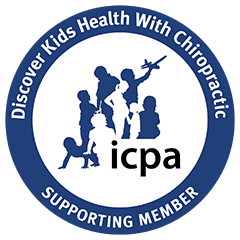4 Ways Chiropractic Can Help
The past decade has been fraught with controversy surrounding infant tongue-tie surgery (“tongue-tie” or “tethered oral tissue”). It can be easy to assume that tethered oral tissue is causing the feeding problem— and that could be! But consider what other structures might be causing the problem. In clinical practice, I’ve seen tongue, head, or neck adaptations that affect feeding function, with or without a tongue-tie.
You may be wondering, how can the pediatric chiropractor help? The chiropractor shouldn’t diagnose a tongue-tie. But they can do much to help the baby with feeding dysfunction. They can also help before and after a tongue-tie surgery (if surgery is needed). The chiropractor might also be able to help your baby avoid a tongue-tie surgery altogether. If you suspect your child has a tongue-tie, here are four points to consider.
Reducing Nerve Interference to Tongue Muscles
If your infant’s tongue seems tight, the oral tissue of the frenulum might not be what’s restricting it. In some cases, nerves that power the tongue may be up-regulated (increased power) or down-regulated (decreased power). In either case, the tongue muscle can appear tight or weak. Furthermore, it is possible that the genioglossus muscle has a trigger point as well, thus pulling the frenulum to the floor of the mouth. Recent research has found a direct connection between the frenulum fascia and the genioglossus muscle. When a baby’s tongue is tighter than normal, you may experience pain if you are breastfeeding. Your baby may also have trouble transferring milk from bottle or breast. Also, some babies have frequent spitting up due to an inability to completely swallow. Nevertheless, a tight tongue muscle can cause feeding problems.
Aligning Bone and Joint Structures Attached to the Tongue
The tongue muscle and the swallowing muscles are attached to the bones of the head and neck. However, if the bony structure is not aligned in the functional position, the soft tissues connected to it can be pulled and tugged from their proper alignment. Hence, this can restrict tongue motion and give the appearance of a “posterior tongue-tie.” Feeding difficulty will follow.
To get a feel for this restriction, try looking down, tucking your chin to your chest, and rotating your head to the right. Now try to suck, swallow, and breathe. When the skull and neck are moved away from normal alignment, swallowing and breathing become difficult and less effective. This is what I call “biomechanical tongue-tie.” It is common for your baby to have their chin tucked to their chest, preventing cervical spine subluxations. The chiropractor can align and normalize these structures and optimize their function to correct this adaptation.
Ruling Out the Frenulum as the Culprit
The frenulum is not always the cause of that restriction. The medical professional might not recognize a tight jaw or a misaligned vertebra, which can also cause ineffective latch or milk transfer. Pediatric chiropractors have special training in recognizing structural adaptations. Therefore, getting chiropractic care before a tongue tie evaluation or surgery will allow the provider to better assess the tongue’s natural state of being. It also helps him or her to discern whether the tissue (frenulum) is functional or needs potential surgery.
Enhancing Results of Tongue Tie Surgery
Sometimes, tongue-tie surgery is necessary. If so, “pre- habilitation” is considered a best practice method to ensure optimal results.
Pre-habilitation gives the surgeon better tissue to work with. It also makes it easier to see inside the baby’s mouth. Before the surgery, it’s important to achieve alignment of the head and neck structures. When surgery is performed on a structure that is not in normal alignment, the wound may heal in an abnormal position and the problem may resurface in the future. Having correct alignment of anatomical structures prior to the surgery just makes sense.
Surgery can be less effective on an area that is not structurally normal or sound. Prior to surgery, a pediatric chiropractor can optimize head and neck structure and tongue function. Whether there is a structural problem in the head and neck or not, your baby will benefit from pre-surgical soft tissue care. If surgery is required, the chiropractor can help to rehabilitate the head, spine, and tongue. This helps:
- Correct motor skill development of the tongue
and spine - Encourage and support ideal wound healing
- Optimize the baby’s anatomy to accommodate
the change created from the surgery
In Summary
Beyond these benefits, chiropractic in general promotes support for the infant’s growing spine and optimal healing from any birth stresses, strains, or traumas. Taking these steps can significantly
decrease the chance of a surgery. It can also support whatever surgery was just performed. That way your baby can achieve normal physiological function. If you suspect a tongue tie, care from a pediatric chiropractor should be an essential first step on your journey to breastfeeding success.
-Andrew Dorough, DC
Appears in Pathways to Family Wellness Magazine Issue #74
Provided and published by ICPA. For more information, visit discoverkidshealth.com
Learn more about the benefits of chiropractic care and the benefits of making it part of your family’s wellness lifestyle. Click to schedule a complimentary consultation with the Body & Balance practitioners today.



